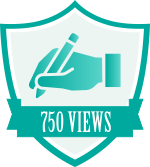User bio
The first two systems I worked with using InterSystems technology were a PDP-11 running M11+ and a VAX 11/750 running M/VX. Too many years ago to count! 😊
Since then I've used most, if not all, InterSystems products up to IRIS and HealthShare today.
I'm Italian living in Switzerland and I work as Senior Consultant at GAIVOTA consultin SA, we provide professional services for InterSystems and other technologies.
Curiosity: apart from DC, I don't have ANY social account! 😁
Show all
Member since Aug 4, 2017
Posts:
Replies:
This is the Community of InterSystems developers, the official InterSystems support is:
I think that to get a definitive answer you should contact WRC Support.
Certifications & Credly badges:





Global Masters badges:







Followers:
Following:
Enrico has not followed anybody yet.

I suggest to read the following post:
SSH with key pair authentication error Ensemble operation